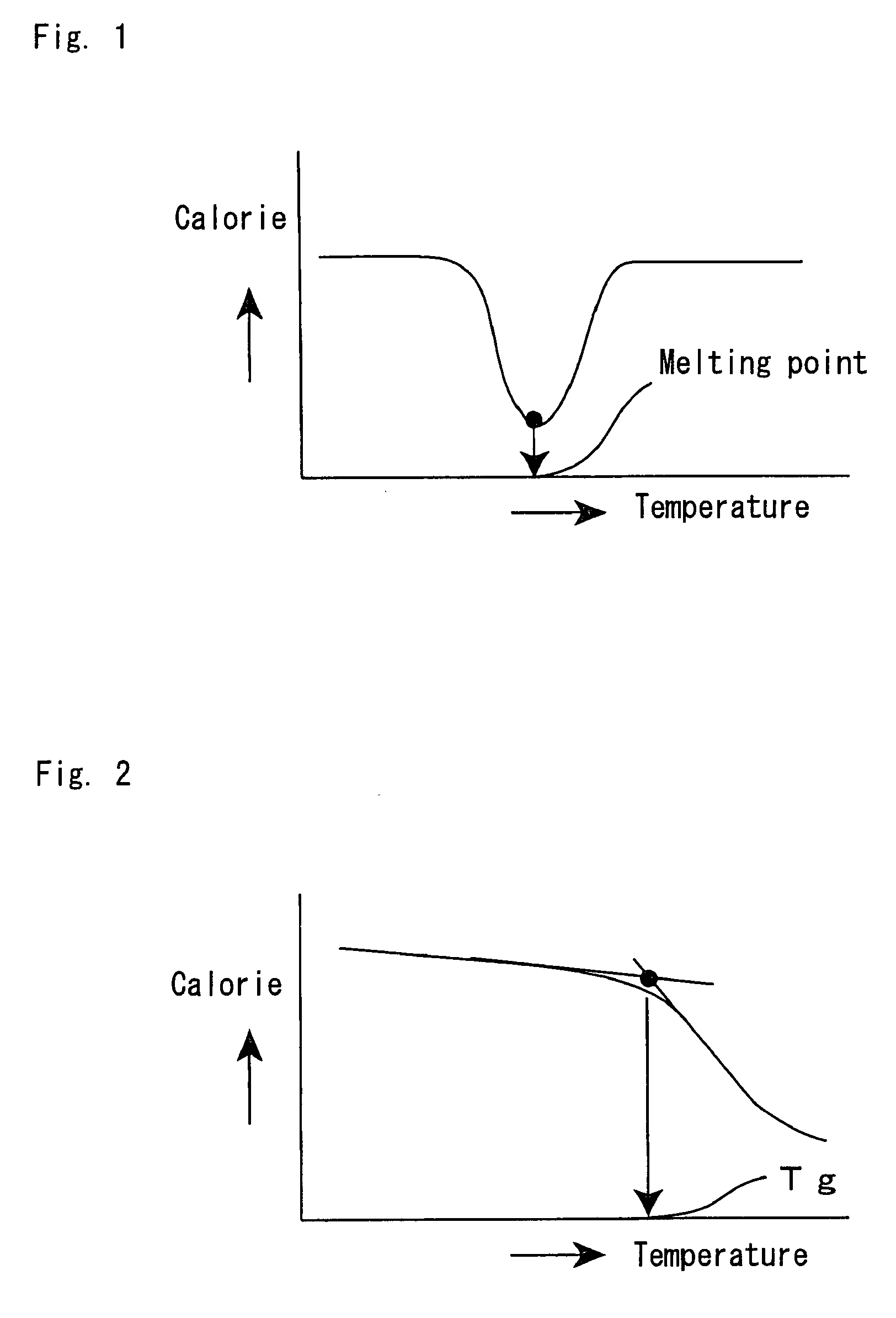Method for forming bright coating film
a coating film and bright technology, applied in the direction of coatings, liquid surface applicators, pretreated surfaces, etc., can solve the problems of poor adhesion property of the top coating film to the substrate, poor wettability of the coating material on the substrate, poor adhesion of the coating material to the substrate, etc., to achieve excellent brightness, shorten the process step, and excellent appearance
- Summary
- Abstract
- Description
- Claims
- Application Information
AI Technical Summary
Benefits of technology
Problems solved by technology
Method used
Image
Examples
production example 1
Production of polypropylene AP-1
[0191]A 1000-mL round bottom flask was charged with 110 mL of deionized water, 22.2 g of magnesium sulfate heptahydrate and 18.2 g of sulfuric acid, and the resulting mixture was dissolved under stirring to form a solution. Commercially available granulated montmorillonite 16.7 g was dispersed in the resulting solution, and the resulting dispersion was heated to 100° C. and stirred for two hours. Thereafter, the dispersion was cooled to room temperature to obtain slurry. The obtained slurry was filtrated to recover wet cake. The recovered wet cake was brought into slurry again in the 1000-mL round bottom flask using 500 mL of deionized water and the obtained slurry was filtrated. This operational procedure was repeated twice. Ultimately obtained cake was dried at 110° C. over a night in an atmosphere of nitrogen to obtain 13.3 g of chemically treated montmorillonite.
[0192]To 4.4 g of the obtained chemically treated montmorillonite, 20 mL of a toluene ...
production example 2
Production of polypropylenes AP-2 to AP-7
[0195]Polypropylenes AP-2 to AP-7 were produced by following the same procedure as in Production Example 1 except for changing the polymerization conditions to those shown in Table 1.
production example 3
Production of Maleic Anhydride Modified Polypropylene APM-1
[0196]Into a glass flask equipped with a reflux condenser, a thermometer, and a stirrer, 400 g of the polypropylene AP-1 obtained in Production Example 1 and 600 g of toluene were put, and the gas phase in the flask was replaced with a nitrogen gas and the content of the flask was heated to 110° C. After heating, 100 g of maleic anhydride was added and 30 g of t-butyl peroxy isopropyl monocarbonate (produced by NOF CORPORATION, PERBUTYL I (PBI)) was added, and the resulting mixture was stirred at this temperature for 7 hours to perform a reaction. After the completion of the reaction, a system was cooled to near room temperature, and acetone was added to a reactant to precipitate a polymer, and the precipitated polymer was separated by filtration. Further, precipitation and separation by filtration were repeated using acetone, and an ultimately obtained polymer was washed with acetone. White powdery maleic anhydride modified...
PUM
| Property | Measurement | Unit |
|---|---|---|
| glass transition temperature | aaaaa | aaaaa |
| temperature | aaaaa | aaaaa |
| temperature | aaaaa | aaaaa |
Abstract
Description
Claims
Application Information
 Login to View More
Login to View More - R&D
- Intellectual Property
- Life Sciences
- Materials
- Tech Scout
- Unparalleled Data Quality
- Higher Quality Content
- 60% Fewer Hallucinations
Browse by: Latest US Patents, China's latest patents, Technical Efficacy Thesaurus, Application Domain, Technology Topic, Popular Technical Reports.
© 2025 PatSnap. All rights reserved.Legal|Privacy policy|Modern Slavery Act Transparency Statement|Sitemap|About US| Contact US: help@patsnap.com



